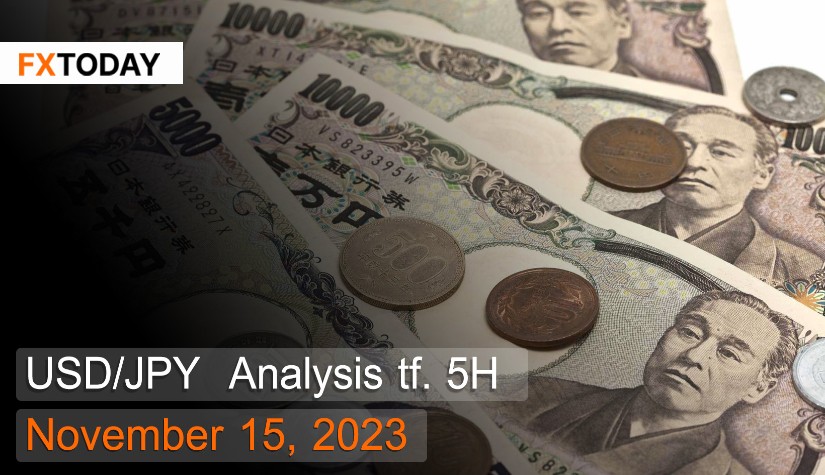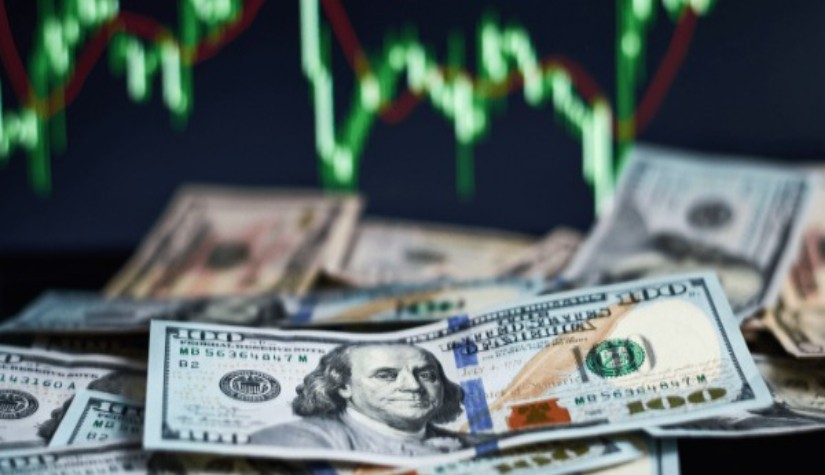The GDP of Japan contracted severely due to a significant decrease in consumption.
The yen of Japan has continuously weakened before bouncing back to around 150.4 yen per US dollar as investors observed Japan's GDP data, showing a faster economic contraction than anticipated in the third quarter amid a global slowdown and a domestically stable yet unchanged inflation rate with no immediate signs of decline.
The Bank of Japan's (BoJ) decision on Yield Curve Control (YCC) last week didn't help investors' outlook on the weakened yen. Kazuo Ueda, a BoJ policymaker, acknowledged that the wider monetary policy divergence contributed to the yen's weakness but stated the BoJ currently lacks measures to directly support the yen.
Japan's economy contracted by 0.5% in the third quarter compared to the previous quarter, a more severe decline than the market's expectation of just 0.1%, primarily impacted by increasing cost pressures and stable yet persistent inflation. Private sector consumption, representing over half of the GDP, unexpectedly slowed down, further contributing to the economic downturn.
Japan's balance of trade revealed a widening surplus of 2.7263 trillion yen in September, propelled by a 2.6% increase in exports year-on-year, while imports decreased by 18.1%. The weakened yen made Japan more attractive for tourists, boosting tourism revenue. However, foreign direct investment significantly declined due to the weakened yen, reducing profits when converted to dollars.
Japan's leading economic index, used to gauge economic trends in the upcoming 2-3 months, decreased to 108.7 in September, impacted by rapidly shrinking factory activities and difficulties in raising prices for various goods and services due to cost pressures. Consumer confidence continuously declined due to reduced income expectations and increasing daily expenses.
The yield on Japan's 10-year government bonds dropped below 0.80%, hitting a record low for the month, mirroring a similar decline in the US Treasury yields. This occurred as US inflation data fell below expectations, leading investors to believe that the Federal Reserve might pause its interest rate hikes.
Techical analysis data (5H)
Resistance: 150.77, 150.88, 151.03
Support: 150.51, 150.36, 150.26
Source: Investing.com
| Name | S3 | S2 | S1 | Pivot Points | R1 | R2 | R3 |
| Classic | 150.26 | 150.36 | 150.51 | 150.62 | 150.77 | 150.88 | 151.03 |
| Fibonacci | 150.36 | 150.46 | 150.52 | 150.62 | 150.72 | 150.78 | 150.88 |
| Camarilla | 150.60 | 150.63 | 150.65 | 150.62 | 150.70 | 150.72 | 150.75 |
| Woodie's | 150.30 | 150.38 | 150.55 | 150.64 | 150.81 | 150.90 | 151.07 |
| DeMark's | - | - | 150.57 | 150.65 | 150.83 | - | - |
Buy/Long 1: If the price touches support in the price range of 150.36 - 150.51 but cannot break the support at 150.51, you may set a TP at approximately 150.88 and SL at around 150.26 or according to your acceptable risk.
Buy/Long 2: If the price breaks the resistance in the price range of 150.77 - 150.88, you may set a TP at approximately 151.03 and SL at around 150.36 or according to your acceptable risk.
Sell/Short 1: If the price touches resistance in the price range of 150.77 - 150.88 but cannot break the resistance at 150.77, you may set a TP at approximately 150.36 and SL at around 151.03 or according to your acceptable risk.
Sell/Short 2: If the price breaks the support in the price range of 150.36 - 150.51, you may set a TP at approximately 150.26 and SL at around 150.88 or according to your acceptable risk.
| Name | Value | Action |
| RSI(14) | 37.146 | Sell |
| STOCH(9,6) | 33.613 | Sell |
| STOCHRSI(14) | 8.146 | Oversold |
| MACD(12,26) | -0.020 | Sell |
| ADX(14) | 40.848 | Sell |
| Williams %R | -86.592 | Oversold |
| CCI(14) | -134.1728 | Sell |
| ATR(14) | 0.3668 | High Volatility |
| Highs/Lows(14) | -0.7279 | Sell |
| Ultimate Oscillator | 35.314 | Sell |
| ROC | -0.749 | Sell |
| Bull/Bear Power(13) | -0.9240 | Sell |
|
Buy:0 Sell:9 Neutral:0 Summary:Strong Sell |
||
















